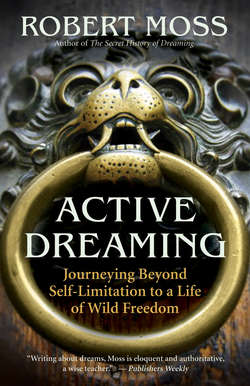Читать книгу Active Dreaming - Robert Moss A. - Страница 24
На сайте Литреса книга снята с продажи.
Playing the Lightning Dreamwork Game
ОглавлениеBuilding on the foundations laid by America’s dreamwork pioneers, I invented a simple, high-octane process for sharing dreams with a partner or a group that I dubbed Lightning Dreamwork because it is meant to be fast (it can be done in five minutes) and to focus energy, like a lightning strike.
It has four steps. Step 1 is to get the dreamer to tell her story as simply and clearly as possible, leaving out autobiography and explanations. Stories need titles, so the dreamer should be encouraged to come up with a title for her dream report. In this way, the dreamer is helped to claim the power of creating and telling stories, which is central to the art of conscious living. When we can tell our story in a way that others can hear and receive, we have acquired real power that can be applied to any situation, from ending a family drama to winning a new job or a book contract.
In step 2, the person who is hearing the dream asks a few questions to get the bare minimum of facts required to place the dream in a context and see how it may apply to the rest of the dreamer’s life, past, present, and future. The first question is always about feelings. How you feel immediately after a dream is the first and best guide to the nature of the dream. The next questions involve running a reality check on the dream. What does the dreamer recognize from her dream in the rest of her life? And is it remotely possible that any part of this dream could play out in the future, either literally or symbolically? I also like to ask the dreamer: What do you want to know about this dream?
Step 3 is to play the If It Were My Dream game. Anyone present during the telling of the dream gets to play. If you are commenting on someone else’s dream, you can do no wrong as long as you follow the simple rule of prefacing your opinions and associations by saying, “If it were my dream…” You are not allowed to interpret another person’s dream. You are going to pretend that her dream is your dream and talk about whatever comes to mind when you play that role, which might range from dreams of your own with a similar theme to your feelings about spiders and the one you found spinning a web over your bed.
Step 4 is to get the dreamer to come up with an action plan, by which I mean a specific and practical way to honor the dream. Sometimes even veteran dreamers are clueless when asked for an action plan. So in a Lightning Dreamwork session, we are all poised to make suggestions about how to move beyond talking to walking a dream.
On the way to an action plan, we ask the dreamer to come up with what Mark Twain called a “snapper,” a personal catchphrase that captures the essence of the dream and the insights that have come through in discussion. This is a neat way to retain a message, and it orients us toward doing something about it.
Come up with the right snapper, and it may lead you to the right snap decision.
